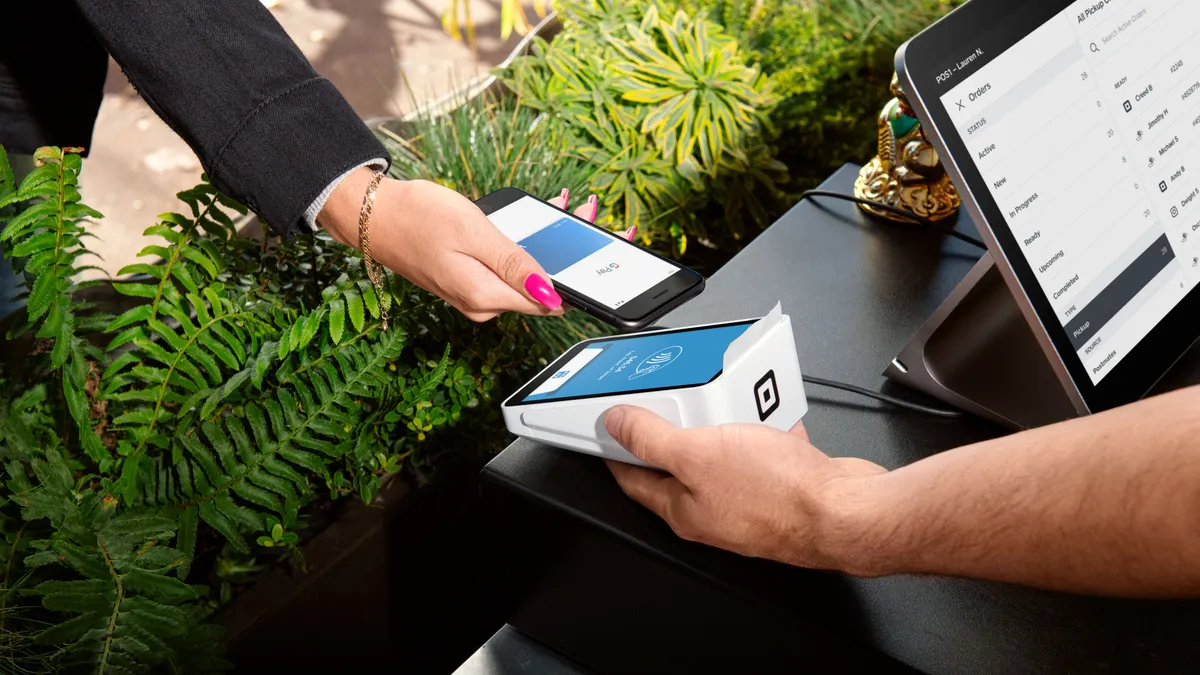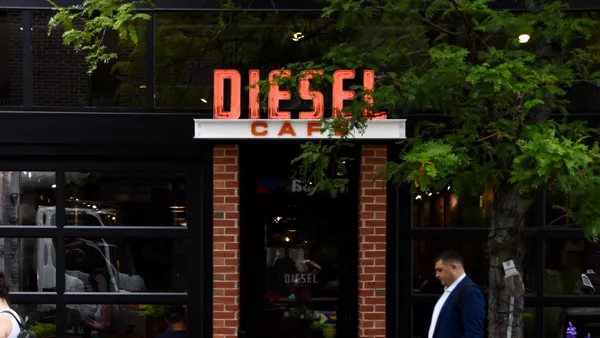The restaurant industry is incredibly adaptive. Every year, restaurateurs continue to find innovative ways to improve on-site and off-site experiences for their customers, even if this means pivoting from their core offerings or rethinking their services.
Consumer preferences, as well as prevailing economic conditions, point to the trends and strategies that stick. Whether that is adopting contactless payment strategies, experimenting with online ordering, or finding ways to connect to their local communities, restaurants are open to finding the best ways to connect with their diners.
To discover the strategies that will shape the industry in 2021, Square teamed up with Wakefield Research to investigate what 500 restaurant owners and managers and 1,000 consumers across the U.S. are thinking about the state and future of the restaurant industry. We analyzed the survey results, insights from Square restaurant experts, and interviews with creative restaurateurs leading the charge in identifying the top restaurant trends for local businesses to explore this year.
Across our findings, digitization will take center stage as restaurants explore ways to improve internal efficiency, deliver more spectacular multi-channel experiences, and stay connected with their customers.
All data cited below comes from the survey results. For a more in-depth look at these 2021 retail industry trends, download the full report.
#1: Contactless ordering and delivery is here to stay
Safety has always been a priority in the restaurant industry, but the focus on safety has become even more important during the pandemic. Contactless tech will be a key investment in 2021, as restaurants look for ways to improve customer experience and meet changing safety guidelines.
Contactless ordering and payment options, such as touchless payments and digital and QR-code menus, will become more mainstream. About three-quarters of restaurateurs (76%) plan on offering contactless tech in 2021, including contactless on-site payment.
Jeff Krupman, owner of San Francisco’s PizzaHacker, captures the benefits for businesses succinctly when he asks: “How often is there a technology that costs nothing, saves a restaurant money, improves the experience for the customer, reduces errors, and ends up effectively increasing the employee tips?”
#2: More restaurants will diversify revenue streams
For many restaurants, an important survival strategy will be to diversify revenue streams by pivoting from their primary offerings and branching out to other verticals such as retail.
David Rusenko, Head of eCommerce at Square, describes these businesses as “multi-hyphenates.” “We’re seeing that the defined, straight vertical lines of your retail business versus your restaurant versus your services business are all blurring,” says Rusenko. “A restaurant-bar-store, for example, might be a place that sells mixology classes, retail gear, and tastings in addition to serving patrons food and drinks.”
The good news is that consumers are receptive to these experiments. More than half of consumers, 59% in fact, say they are either very likely or somewhat likely to buy items from restaurants or retail stores that are not part of their core offerings.
Even restaurateurs who are not ready to take the leap into new verticals are still making changes to their identities, starting with their menus. Nearly all restaurateurs, around 92%, say they are likely to make menu changes, with 48% planning to cut items or completely change their menus in 2021. Again, consumers say to bring it on. In fact, 41% expressed their willingness to try new menu offerings.
With customers open to these identity experiments, then there’s no reason not to spice things up, especially if it can translate to more revenue for your business.
#3: Kitchen automation is a priority
As restaurants experiment with new menus, offers, and channels, streamlining the kitchen becomes crucial in order to effectively deliver a consistent customer experience across channels.
Restaurateurs are investing in digital technology to improve back of house processes, with 91% reporting they have made or plan to make investments in kitchen automation technology.
Streamlined kitchens mean better efficiency across channels, giving restaurateurs the confidence and freedom to test out new concepts.
“With a streamlined and equipped kitchen, there’s nothing physically stopping you from trying four or five new restaurant concepts at a time, and then picking the winner once one of those concepts is proven,” says Rajat Deva, a Product Marketing Manager for Square for Restaurants.
#4: More direct orders coming through
More restaurateurs want to take charge of their online ordering and delivery in 2021 and decrease reliance on third parties. The reason is simple: They want to control the end-to-end customer experience.
“Direct delivery is going to become a very big thing,” says Bruce Bell, Head of Square for Restaurants. “Having a direct ordering channel gives restaurateurs more control [over] how they engage consumers with marketing and loyalty programs.”
Consumers also want to skip the middlemen, with 67% saying they would rather use a restaurant’s own website or app for food delivery rather than a third-party app. Their main reason for doing so is to support the restaurant directly.
“If the restaurant has its own couriers, or leverages Square’s resources for On-Demand Delivery, there’s an even bigger opportunity to own the end-to-end customer experience in a really efficient way,” says Bell.
By taking more direct orders, businesses will have more control over customer engagement. They will have access to centralized customer data, allowing them to deliver better marketing and loyalty programs.
#5: Enhancing experiences to build customer loyalty
Restaurants are coming up with creative ways to boost customer engagement and loyalty. About 90% of restaurateurs plan to implement customer engagement initiatives to increase customer retention.
One way businesses are doing this is by reimagining existing concepts. For example, drive-in and drive-through services are hardly new concepts in the fast-food industry, but they have become more popular since the pandemic.
Fifty-two percent of restaurateurs reported plans to offer drive-through service for takeout in 2021, but the appeal is in how they plan to deliver these services. Almost half of restaurateurs (48%) plan to offer the classic, 1950s-style model of drive-in dining, in which customers park on-site to eat in their cars, while others are considering hybrid models.
Besides reimagined concepts, 41% of restaurateurs are also exploring special event initiatives to increase customer engagement. Some of these initiatives include personalized dining experiences for major holidays, online cooking classes, and virtual tastings or dining events.
To make the most out of these initiatives, restaurants are also focused on rewarding loyalty. Well-planned loyalty programs can provide deep insight into the needs and preferences of customers, helping businesses improve customer satisfaction. This is why 42% of restaurateurs plan to offer new or expanded loyalty programs.
By providing creatively revamped services and investing in fresh initiatives, restaurants can provide great customer experiences whether customers are dining in or doing takeout, helping to boost customer retention and sales.
#6: Restaurants are refocusing on the community
Restaurants play a special role in many communities. It’s the venue for many important life events — first dates, reunions, and business meetings. Strong community ties mean stronger connections with patrons, which is why many restaurants plan to invest in more community service initiatives.
Ninety-two percent plan to do more community engagement in 2021, such as cooking for community service providers, donating food or money to community organizations, and offering support to local minority-owned businesses.
This is a good development because 81% of consumers want to see businesses provide food or supplies to community organizations, events, or service providers. “People recognize that it’s important for restaurateurs to share what they can with their communities, and the industry is stepping up to do that,” says Bell.
By participating in more community engagement initiatives, restaurant owners and managers can win more brand love while delighting patrons with new experiences.
Restaurant owners and managers have remained enduringly resilient in the face of mounting challenges and difficult economic conditions. From contactless service delivery to kitchen automation to reinventing old services for the patrons’ delight, restaurateurs say there’s no slowing down.
You can adapt some of these trends in your business. First, take stock of your current challenges and consider the trends that could deliver the most benefit for your business. In particular, embracing digital technology will help you run your business more efficiently and stay relevant in a digital future. An efficient tech-driven restaurant that is in touch with the community is the future of the restaurant industry.
Access the full Future of Restaurants report to learn more.










